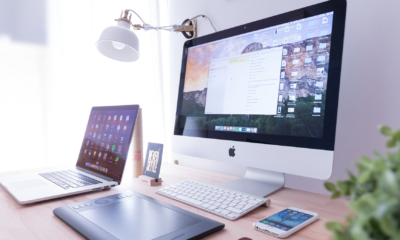Business
Five ways to make your office feel bigger than it actually is
Every successful business needs an efficient and affordable workspace to flourish, but in a recovering economy rapidly gaining momentum, the demand for office space has surged. In London, one of the most influential financial hubs in the world, office vacancy rates dropped to a 15-year low during the third quarter of 2015.
With the competition for space intensifying, the value of office space has soared. Many businesses cannot afford to rent the space they need to thrive. Instead they are being forced to compress their staff and equipment into spaces that discourage company growth.
However, despite the distinct lack of room, space is often wasted by being left unutilised. To realise the full potential of your workspace, here are five ways to give your office the illusion of being much larger than it actually is.
Allow natural light into the office
Not only does natural light open up an interior, making it feel less confined and more spacious, it is also hugely beneficial to office productivity. Researchers have found a strong correlation between exposure to natural light during office hours and sleep, energy levels and quality of life.
To maximise the natural light in an office, free up as much space around windows as possible. This means removing anything that obstructs the flow of light, such as dark or heavy curtains. Curtains can be replaced with shades that can be adjusted according to the varying light conditions throughout the day. Alternatively, curtains made from lightweight fabrics can help to keep natural light in tact.
Bringing natural light into your office will instantly connect the room with the outdoors. If the view is not so pleasing to the eye, place plants or flowers near the windows and use lamps to brighten the space.
Use a light colour palette to paint walls
Along with changing the entire mood or feel of a room, paint has the ability to optically enlarge a space. Pale or neutral colours make an office space seem brighter and more spacious, while bold, dark colours will make it feel cosy and less spacious.
Light colours are particularly useful in offices with little natural lighting. Using lighter hues can help to enhance the little light a space does have, as well as creating the illusion that the room’s walls are receding. To emphasize the height of an office, paint the ceiling white. Adding vertical stripes to walls can also make them seem higher, although it’s important to use a subtle colour combination to avoid overpowering a small room.
Numerous studies into colour psychology have found that different colours can have different effects on office employees. For instance, pale blue hues can boost productivity and help employees remain calm, while refreshing light green hues help prevent fatigue in employees working long hours.
Use materials that enhance the illusion of space
There are few better additions to a small space than a well-placed mirror. Designers use mirrors to amplify natural light, break up visual clutter, make a room feel deeper and solve many other design dilemmas. Go one step further and choose architectural-style mirrors that create the illusion of an extra window or door, furthering the impression of extra space.
Glass can be used in a number of ways throughout an office. Transparent partitions provide a great way of separating meeting rooms and breakout areas without restricting the flow of natural light. If you’re office is based on multiple floors, even the elevator can be designed to limit the amount of space it uses. A glass lift can become a stylish central design feature that doesn’t hinder natural light, such as the transparent elevator on the Lloyds building in London.
Reduce the need for storage space using cloud technology
Cloud-based services allow employees to exchange and collaborate on work electronically, while securely storing these documents online. This reduces the need for large filing systems that take up office space.
Furthermore, provided internet access is available, cloud technology permits employees to work remotely. With more employees working from home, less permanent desk space will be needed in the office.
Behind-the-scenes interactions can also be completed in the cloud. For instance, contractor accountants 3 Wise Bears have encouraged businesses to adopt the use of cloud accountancy software to increase efficiency with their accountants.
Declutter and downsize wherever possible
Clutter can be a small office’s downfall, making it feel much smaller than it actually is. While those in creative industries may argue that a disorderly environment stimulates the imagination, clutter has been proven to reduce productivity and increase stress levels. Studies have also discovered that the average worker wastes almost one week a year searching for misplaced items.
Having a clutter-free environment helps us to concentrate and produce better results. Clearance Solutions have created a useful decluttering flowchart designed to help you decide what to keep and what can go. Once you’ve made room for the essentials and have everything in place, you can enjoy the extra space made from ditching all of the junk.











